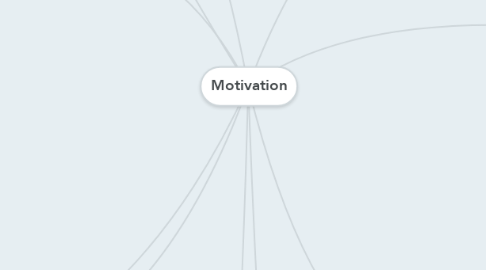
1. Intrinsic
1.1. Internal Factors
1.2. Personal reason to do well
1.3. E.g. Enjoyment, Keeping Fit Personal Goal
2. Extrinsic
2.1. External Factors
2.2. Rewards
2.3. E.g. Trophies/Money
3. The drive to do well. Willingness of a person to put in effort towards achieving a personal goal.
4. Causes of Anxiety
4.1. Lack of preparation
4.2. Difficulty level of task
4.3. Fear of failure
4.4. Fear of punishments
4.5. Crowd response (Jeering, playing at 'away' match)
4.6. Threat to self-image (loss of fan support, fame, money)
5. Anxiety and its effects on Sporting Performance
5.1. Loss of coordination and fine motor skills (trembling,freezing up)
5.2. Loss of concentration (tunnel vision,blanking out)
5.3. Change in behaviour (aggression/negative self -talk)
6. Coping with Anxiety
6.1. Ways to cope with Anxiety
6.1.1. Verbal reassurance (saying positive things)
6.1.2. Ensuring success( Setting easy, achievable goals)
6.1.3. Relaxation(breathing to relax muscles
6.1.4. Positive thinking (Concentrate on Success/Block Failure)
6.1.5. Imagery(Visualising calming images,scenes)
6.1.6. Mental rehearsal (Mentally run through the sequence of events)
7. Arousal and Performance
7.1. Under-arousal
7.1.1. Not sufficiently ready, not prepared mentally, unfocussed, lethargic
7.2. Optimal-arousal
7.2.1. Yerkes-Dodson Law demonstrates on the empirical relationship between arousal and performance. Dictates the performance increases with cognitive arousal, only to a certain point: then lives of arousal becomes to high,performance will decrease. A corollary is that there is an optimal level of arousal for a given task.
7.3. Over-arousal
7.3.1. Over-anxious to do well, stressed out, nervous break-down.
7.4. Factors Affecting Arousal
7.4.1. Giving of rewards by coach
7.4.2. Giving of punishments by coach
7.4.3. Level of competition
7.4.4. Cheering by spectators
7.4.5. Jeering by spectators
8. Arousal
8.1. State of readiness of a performer
8.2. Physiological responses to arousal
8.2.1. Increased heart rate,increase blood flow to transport Oxygen and remove Carbon Dioxide.
8.2.2. Increased respiration, increase Gaseous exchange in lungs.
8.2.3. Muscles start to tense , preparation for contraction.
8.2.4. Sweating,heat regulation
8.2.5. Production of adrenaline, boost supply oxygen and glucose to brain and muscles.
8.2.6. Mentally alert, excited,anxious,etc.-Awareness of surroundings
9. Setting Goals helps to ;
9.1. Motivate us to try harder to achieve more
9.2. Control Anxiety
10. Principles of Goal Setting (SMARTER)
10.1. Specific
10.1.1. Concrete and focussed areas for improvement (I want to improve my 3-point success rate by 20%
10.2. Measurable
10.2.1. How much? How far? How soon?
10.3. Agreeable
10.3.1. Agreement between performer and coach on common purpose, shared expectations and mutual understanding
10.4. Realistic
10.4.1. Achievable with good/honest effort
10.5. Time-phased
10.5.1. Short term (near future) / long term goals (Progression through Short term)
10.6. Exciting
10.6.1. Keep the performer interested, alert to changes, avoid complacency, offer rewards
10.7. Recorded
10.7.1. Provide meaningful evidence of progress and material to structure future training plans
